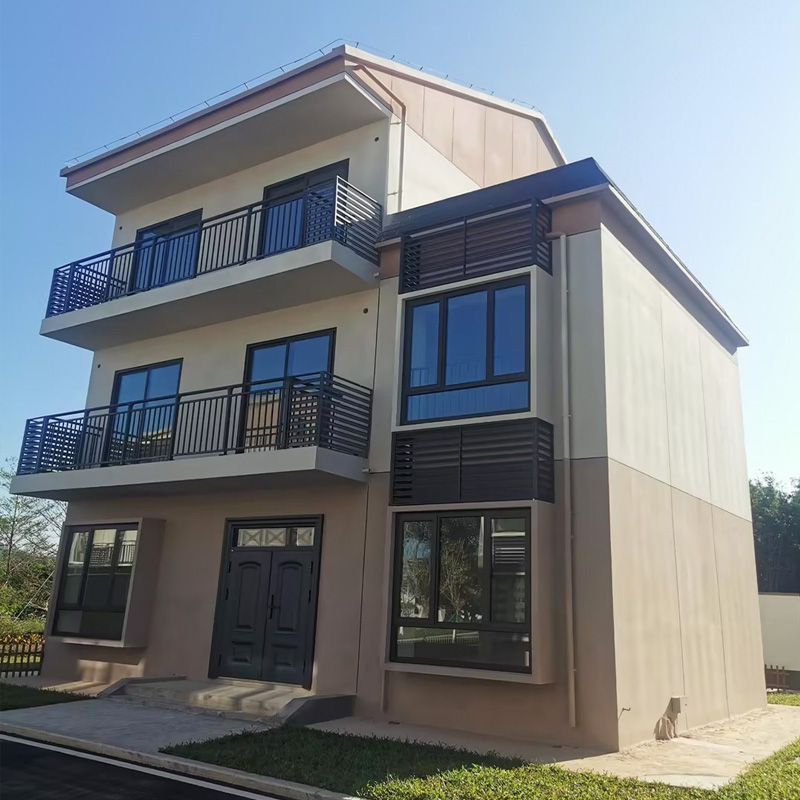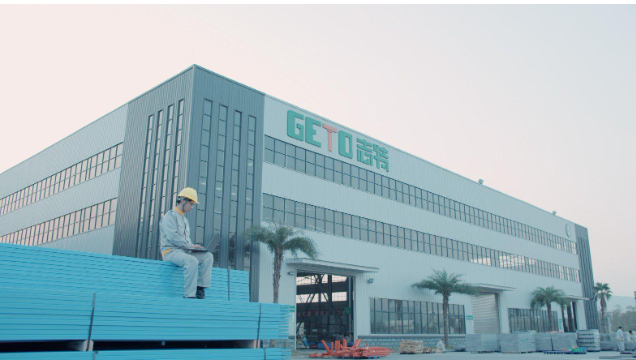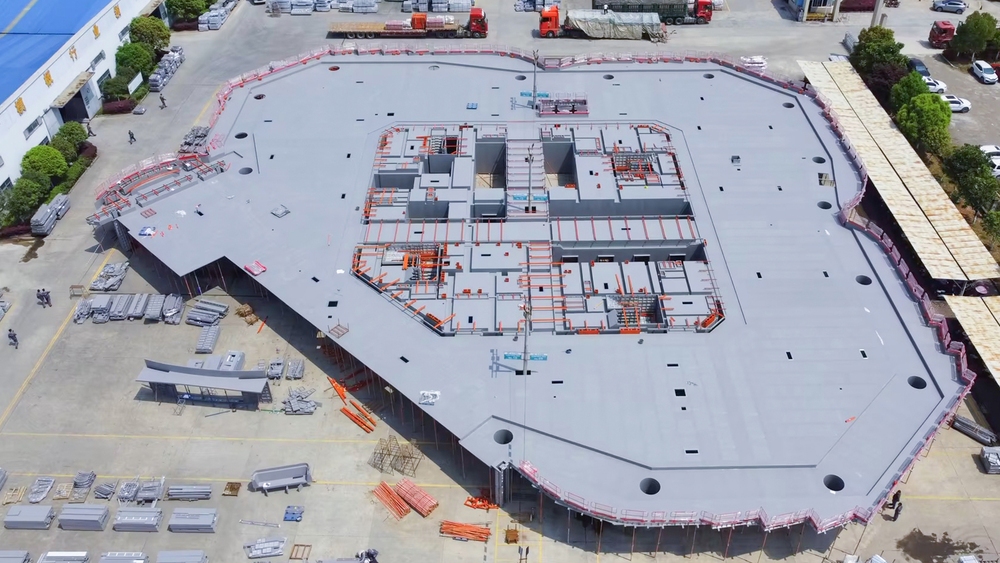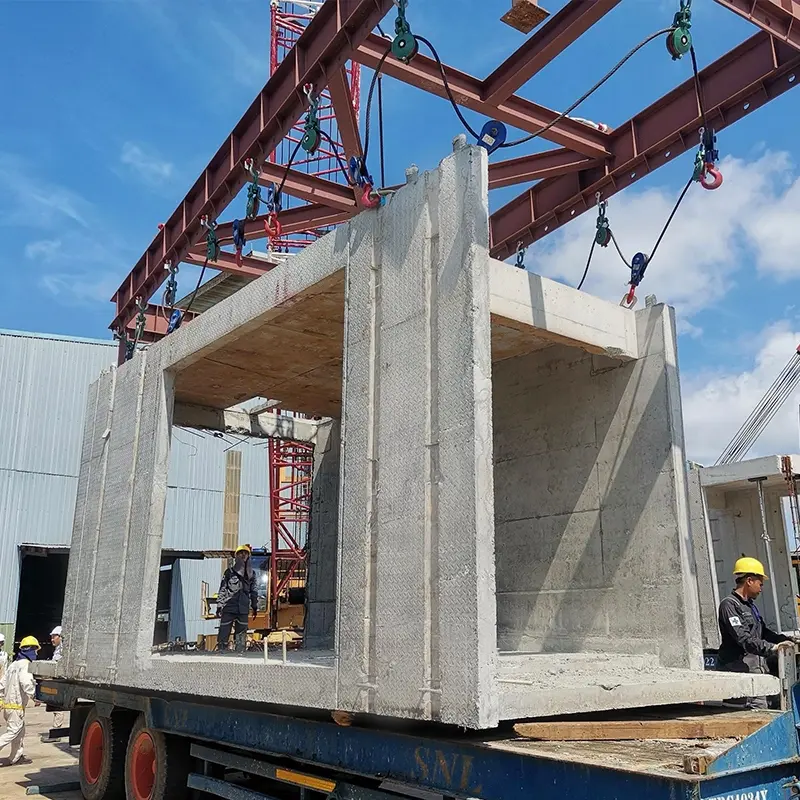What Is a Modular Building? Insights from GETO 2025
A modular building is a form of prefabricated construction in which individual sections, known as modules, are manufactured off-site within a controlled factory environment. These precisely engineered modules are then transported to the construction site, where they are swiftly assembled to create a fully functional building. Unlike traditional construction methods that rely heavily on on-site labor and extended timelines, modular building integrates high-precision factory production with efficient on-site installation. This approach not only accelerates the overall construction process but also enhances quality control, reduces material waste, and minimizes disruptions caused by weather or site conditions.
Precast Concrete Modular Building
Key Characteristics of Modular Buildings
- Factory-built modules: Each part is manufactured with exact specifications.
- On-site assembly: Modules are transported and joined together like building blocks.
- Flexibility in design: Modular buildings can be customised to fit various architectural styles and functions.
- Speed of construction: Modular projects typically take less time than conventional buildings.
- Sustainability: Less waste and better quality control mean a greener footprint.
Why Are Modular Buildings So Popular in 2025?
The construction industry faces increasing demands for faster, cost-effective, and sustainable building methods. Here’s why modular construction is booming in 2025:
1. Faster Project Completion
GETO’s data shows modular buildings can reduce construction time by 30% to 50%. Since modules are built simultaneously with site preparation, projects finish sooner, allowing quicker occupancy and return on investment.
2. Cost Efficiency
Building in a factory reduces labour costs, delays, and material waste. Modular buildings benefit from economies of scale, controlled environments, and less exposure to weather-related interruptions.
3. Improved Quality Control
Factory construction means consistent quality checks and precision manufacturing. This leads to safer, stronger, and more durable buildings.
4. Environmental Benefits
Modular buildings generate less waste and have a lower carbon footprint than traditional construction. Additionally, they often use sustainable materials and energy-efficient designs.
5. Versatility Across Sectors
Modular construction is no longer limited to simple structures. Today, it’s used for:
- Residential homes and apartments
- Commercial offices and retail spaces
- Educational buildings
- Healthcare facilities and hospitals
- Hotels and hospitality venues
- Industrial and warehouse buildings
- GETO 2025 reports an increasing adoption across these industries due to modular building’s adaptability.
How Does Modular Construction Work?
The process involves several steps:
Step 1: Design and Engineering
Architects and engineers collaborate to create detailed digital models. Modular design allows easy adjustments before production begins.
Step 2: Factory Fabrication
Modules are constructed indoors, including walls, floors, ceilings, and interior finishes. Plumbing, electrical, and HVAC systems are pre-installed.
Step 3: Transportation
Completed modules are transported from the factory to the construction site using trucks or specialised carriers.
Step 4: On-site Assembly
Modules are placed on pre-prepared foundations and connected. Final touches like exterior cladding and landscaping are completed.
How long does it take to build a modular home?
Building a modular home typically takes about 3 to 6 months from start to finish, but the exact time can vary depending on several factors:
- Design and Planning: Choosing your design, customizing the floor plan, getting permits, and finalizing contracts usually take a few weeks to a couple of months.
- Factory Construction: The modules (sections of the home) are built in a factory, which generally takes 4 to 12 weeks. This controlled environment speeds up construction compared to traditional building.
- Site Preparation: While the modules are being built, the site (foundation, utilities, driveway) is prepared, often taking a few weeks.
- Delivery and Assembly: Once modules are ready, they’re transported to your site and assembled. This usually takes a few days to a couple of weeks, depending on complexity.
- Finishing Touches: After assembly, finishing work like connecting utilities, interior trim, painting, and inspections can take several weeks.
Summary
- Fast projects: 3 months
- Average: 4-6 months
- Complex/custom homes: 6 months or more
Common Myths About Modular Buildings
Despite its many benefits, some misconceptions still surround modular construction:
- Myth 1: Modular buildings are low quality. Reality: Factory-controlled environments ensure high precision and quality.
- Myth 2: Modular means cookie-cutter designs. Reality: Modular buildings offer flexible, customizable designs.
- Myth 3: Modular construction is only for temporary buildings. Reality: Many permanent, multi-story modular buildings exist worldwide.
Why Choose GETO 2025 for Your Modular Building Project?
GETO is a pioneer in delivering cutting-edge modular building solutions in 2025. Here’s why:
- Expertise in engineering and design tailored to your needs.
- Use of sustainable, eco-friendly materials.
- End-to-end project management ensuring on-time delivery.
- Advanced factory facilities with strict quality controls.
- Comprehensive customer support from concept to completion.
Conclusion
Modular buildings represent the future of construction — faster, smarter, and greener. Whether you’re planning a residential project or a commercial facility, understanding what a modular building is can help you make an informed decision. Trust GETO 2025 for innovative modular construction that meets the demands of today and tomorrow.








